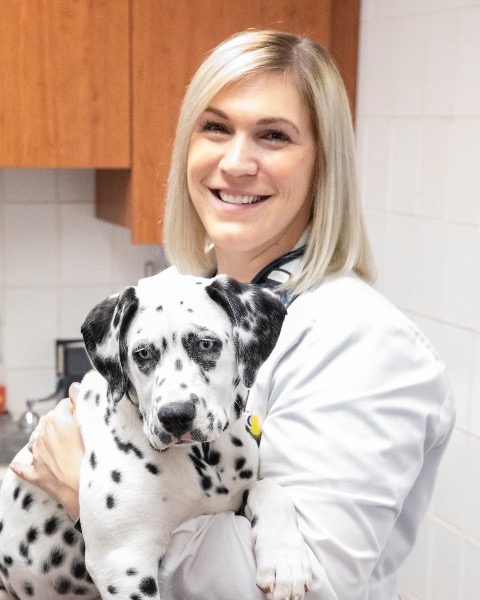Neurology
Category: Research Abstract - ePoster
(N23) Disposition and Bioequivalence of Single-dose Compounded and Commercial Extended Release Levetiracetam in Healthy Dogs
Thursday, June 15, 2023
9:25 AM - 9:40 AM ET
Location: Solutions Center Poster Park - Kiosk 4

Kari Foss, DVM, DACVIM (Neurology)
Assistant Professor
University of Illinois
Urbana, Illinois, United States
Research Abstract – ePoster Presenter(s)
Abstract:
Background: Levetiracetam is an antiepileptic medication used in veterinary medicine and is available in an extended release (ERLEV) oral formulation administered twice daily. Per manufacturer specification, the large tablets cannot be crushed or split, limiting its use in small dogs.
Hypothesis/
Objectives: To determine the bioequivalence of compounded ERLEV (COMP) and commercial ERLEV (COMM) in healthy dogs following administration of a single oral dose.
Animals: Twelve healthy dogs, no less than 12 months old and weighing at least 15 kilograms.
Methods: Dogs were prospectively enrolled in a randomized crossover study and assigned to receive a single oral dose of COMM (intact tablet) or COMP (partitioned tablet). Samples were collected at prescribed timepoints during the 24 hours after administration, with the other formulation given following a washout period. Serum levels were quantified using a validated immunoassay. Pharmacokinetic analysis for COMM and COMP was performed using non-compartmental methods. COMM and COMP were considered bioequivalent if the 90% CI fell within +/- 20% for maximum serum concentration (Cmax) and area under the curve (AUC).
Results: The geometric mean of the difference between treatments in Cmax was -0.56 mcg/mL (90% CI: -7.4%, +1.1%) and AUC was -22 mcg*h/mL (90% CI: -17.8%, -10.8%). Based on a target CI of +/-20% for both parameters, the treatments were considered bioequivalent.
Conclusions and clinical importance: Partitionable COMP may be a viable treatment option in small breed epileptic dogs who cannot receive COMM and may improve medication adherence relative to immediate release levetiracetam, which requires three times daily dosing.
Background: Levetiracetam is an antiepileptic medication used in veterinary medicine and is available in an extended release (ERLEV) oral formulation administered twice daily. Per manufacturer specification, the large tablets cannot be crushed or split, limiting its use in small dogs.
Hypothesis/
Objectives: To determine the bioequivalence of compounded ERLEV (COMP) and commercial ERLEV (COMM) in healthy dogs following administration of a single oral dose.
Animals: Twelve healthy dogs, no less than 12 months old and weighing at least 15 kilograms.
Methods: Dogs were prospectively enrolled in a randomized crossover study and assigned to receive a single oral dose of COMM (intact tablet) or COMP (partitioned tablet). Samples were collected at prescribed timepoints during the 24 hours after administration, with the other formulation given following a washout period. Serum levels were quantified using a validated immunoassay. Pharmacokinetic analysis for COMM and COMP was performed using non-compartmental methods. COMM and COMP were considered bioequivalent if the 90% CI fell within +/- 20% for maximum serum concentration (Cmax) and area under the curve (AUC).
Results: The geometric mean of the difference between treatments in Cmax was -0.56 mcg/mL (90% CI: -7.4%, +1.1%) and AUC was -22 mcg*h/mL (90% CI: -17.8%, -10.8%). Based on a target CI of +/-20% for both parameters, the treatments were considered bioequivalent.
Conclusions and clinical importance: Partitionable COMP may be a viable treatment option in small breed epileptic dogs who cannot receive COMM and may improve medication adherence relative to immediate release levetiracetam, which requires three times daily dosing.


